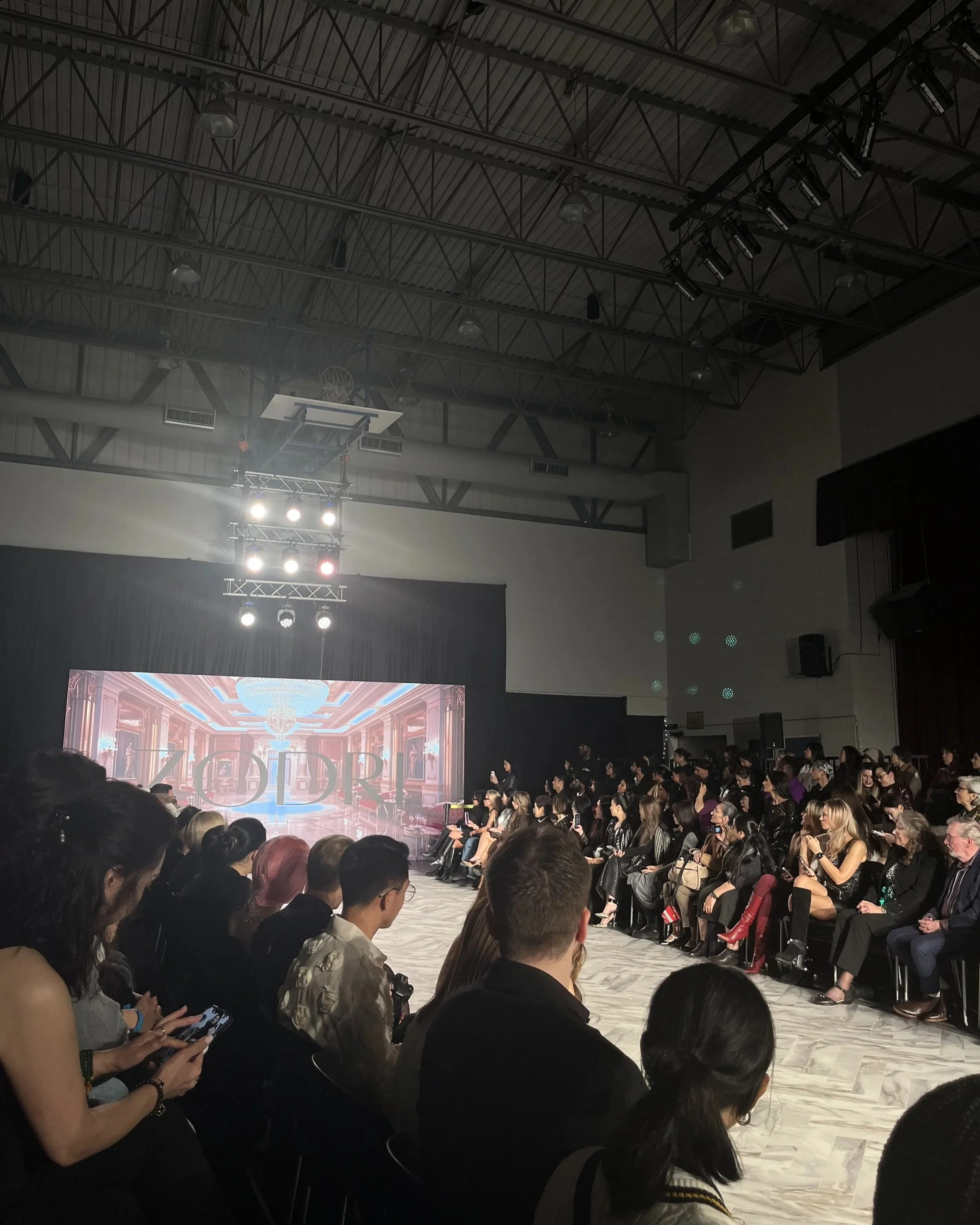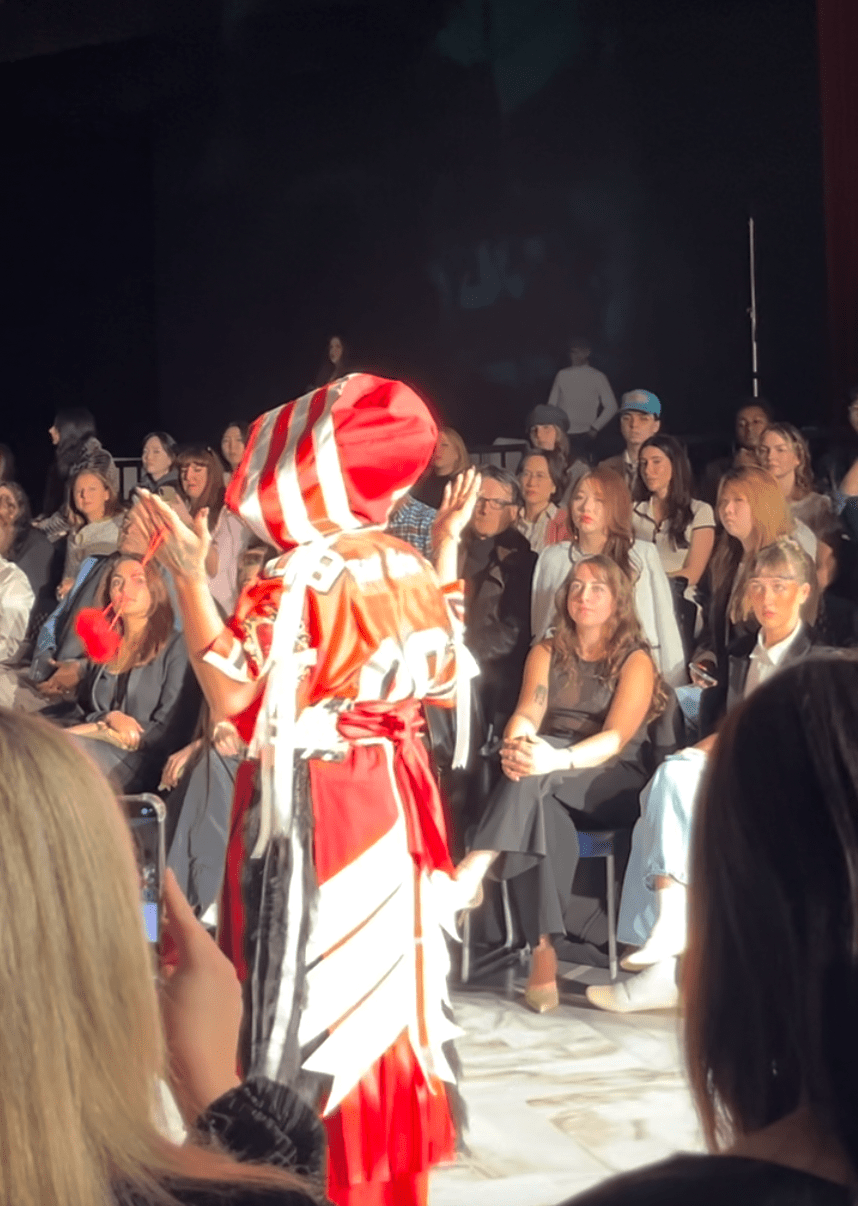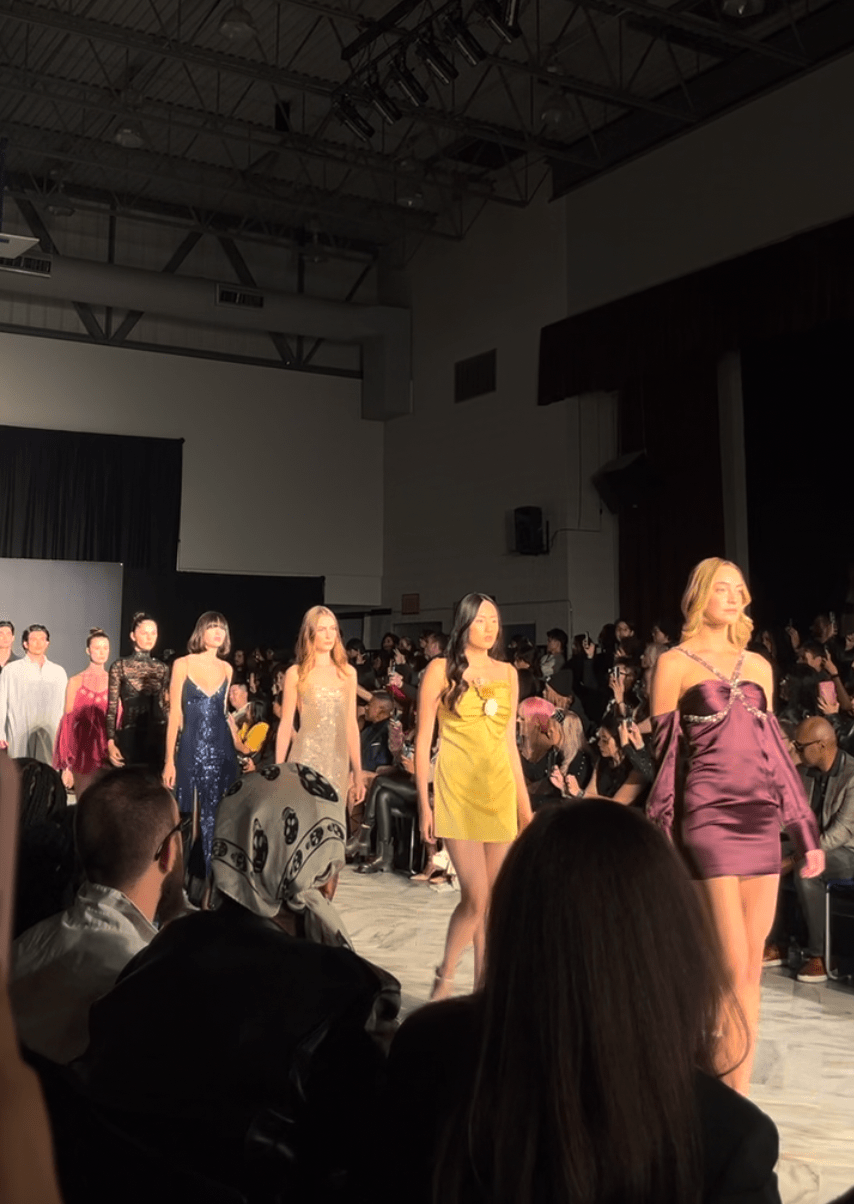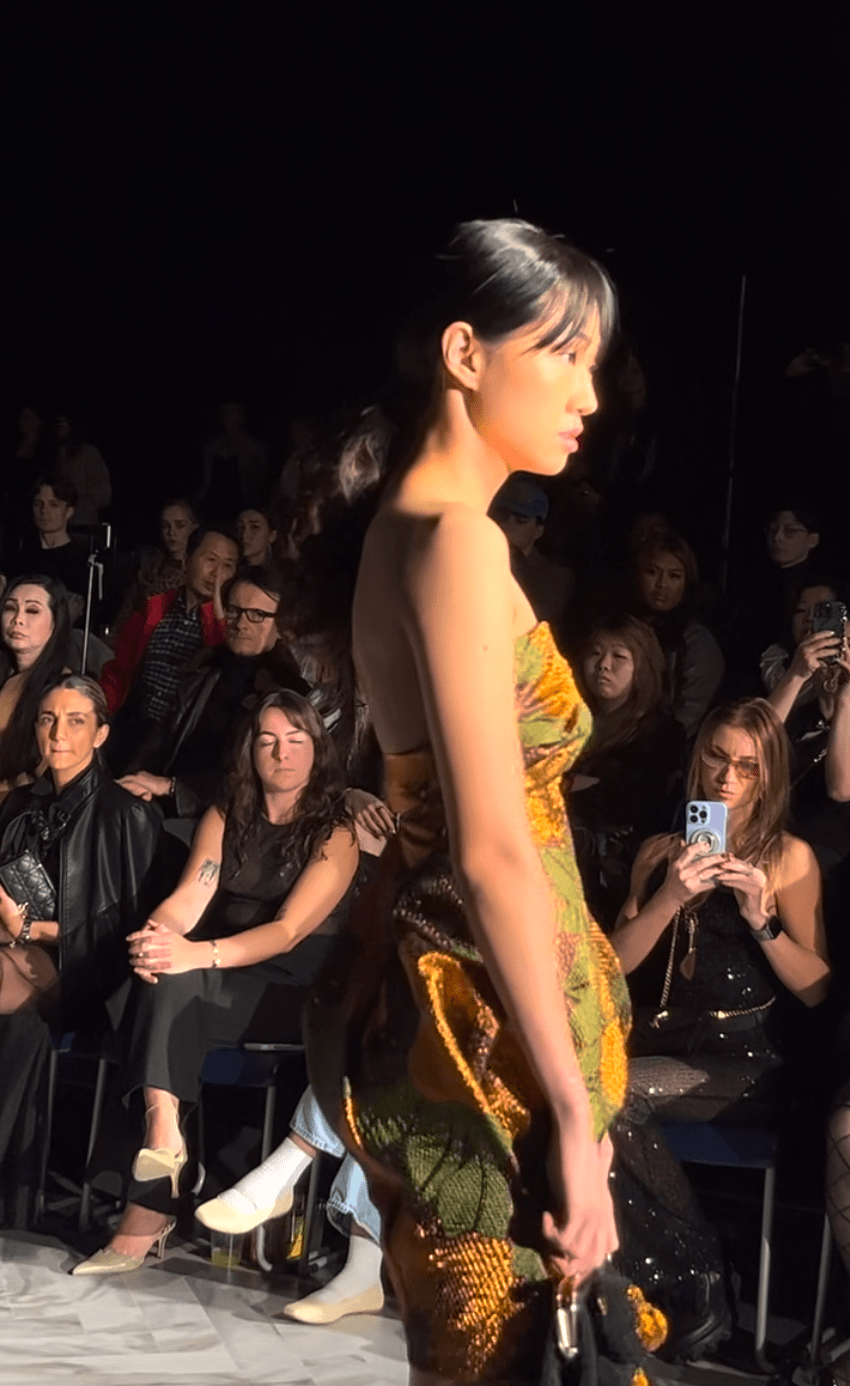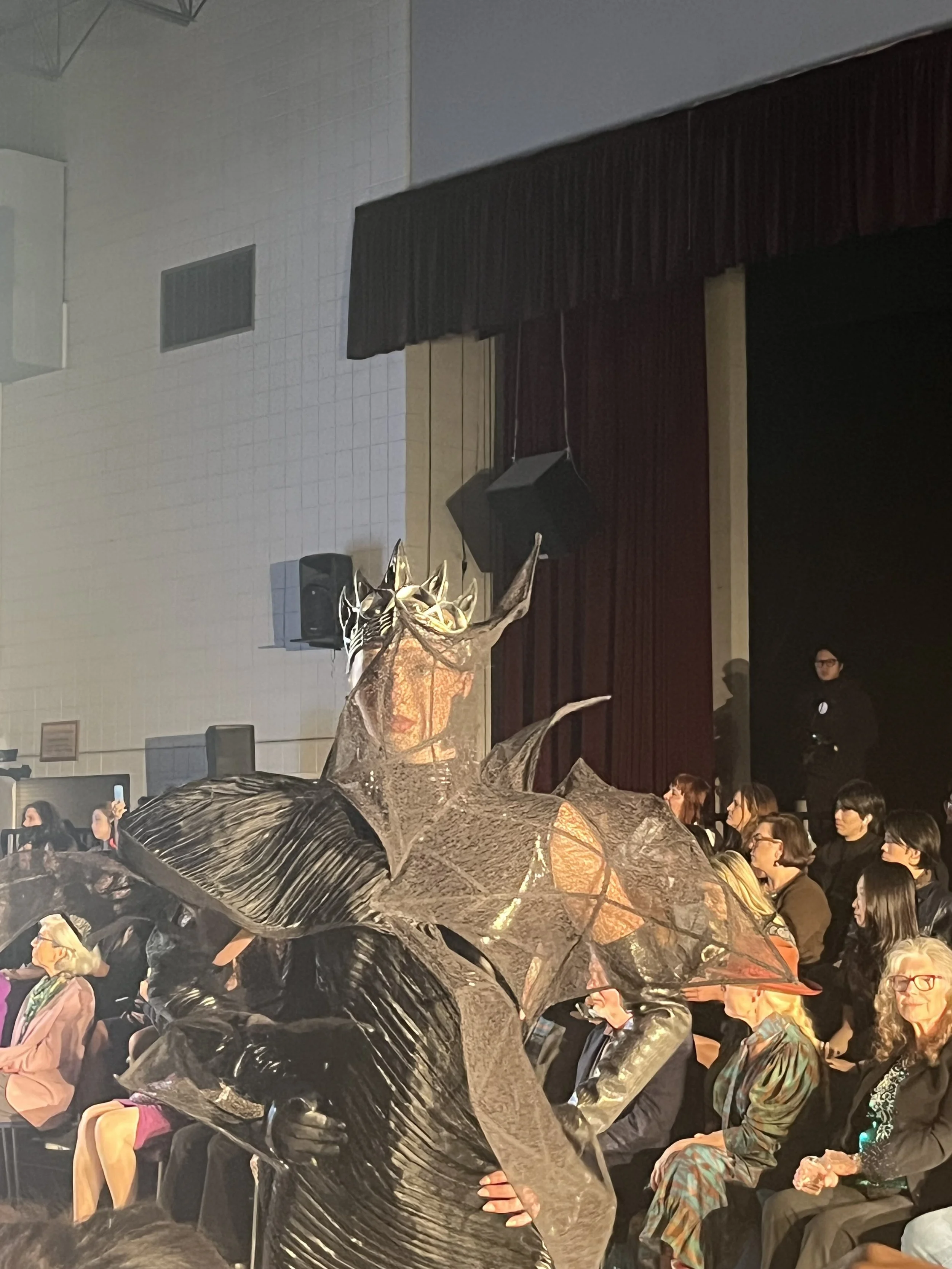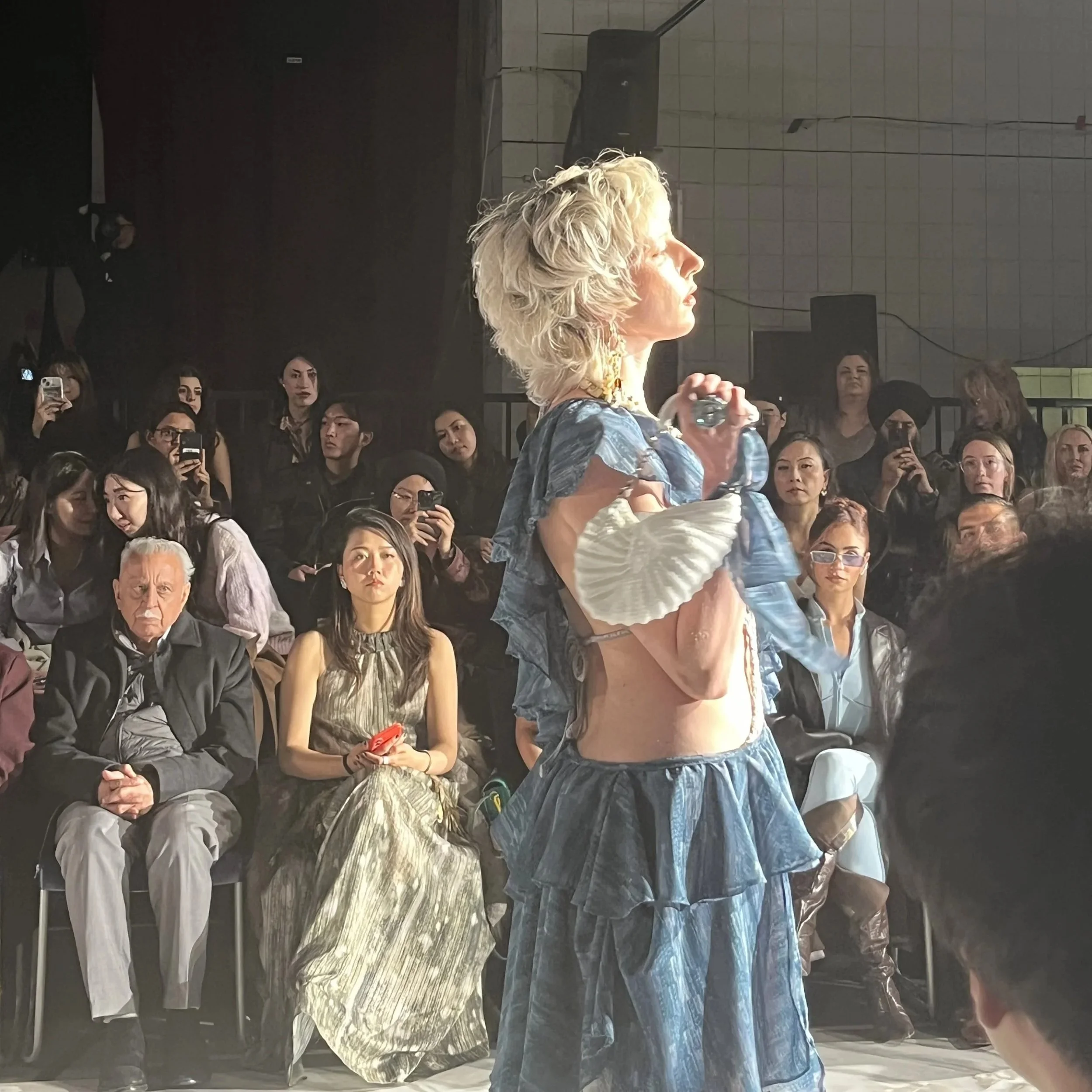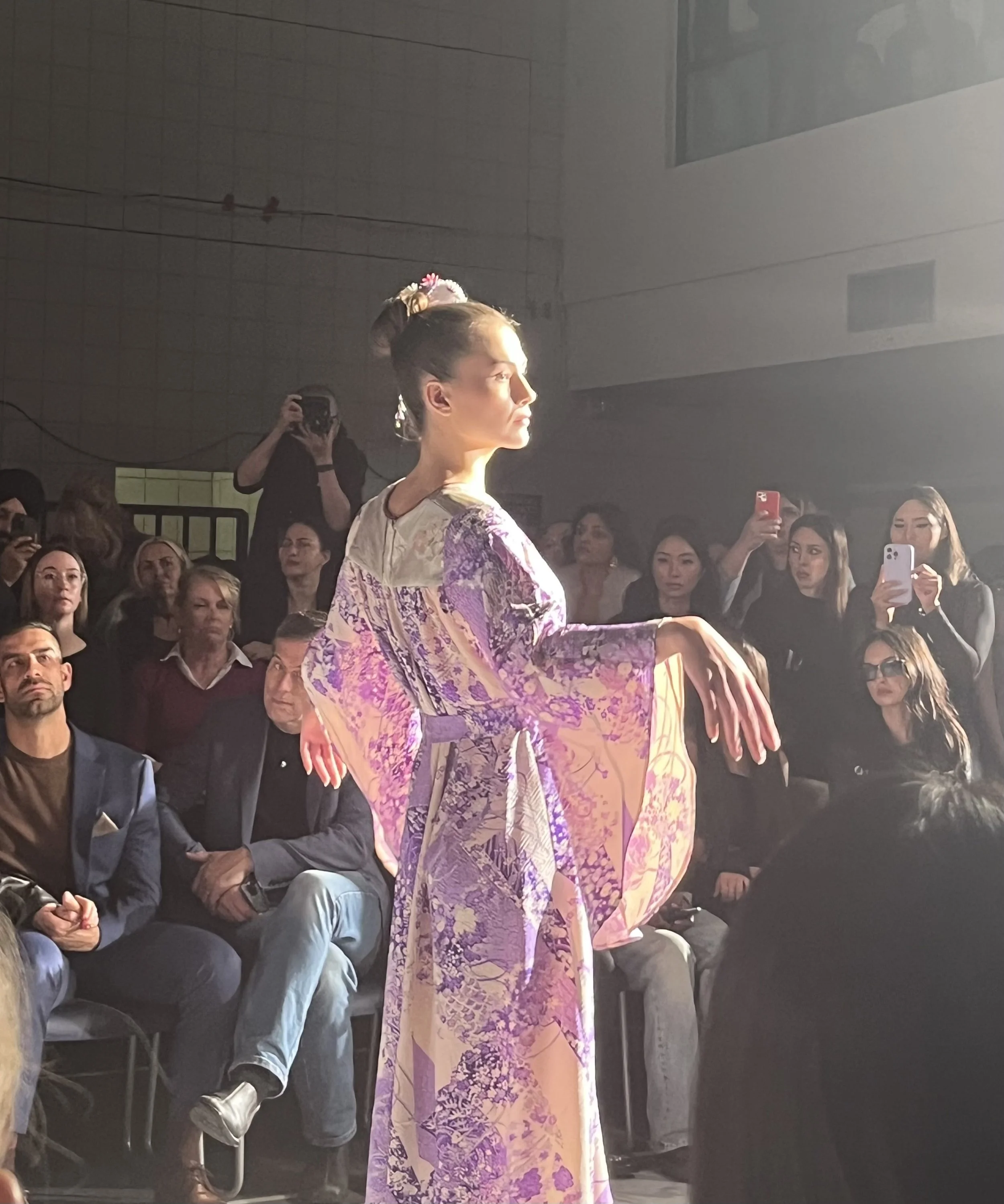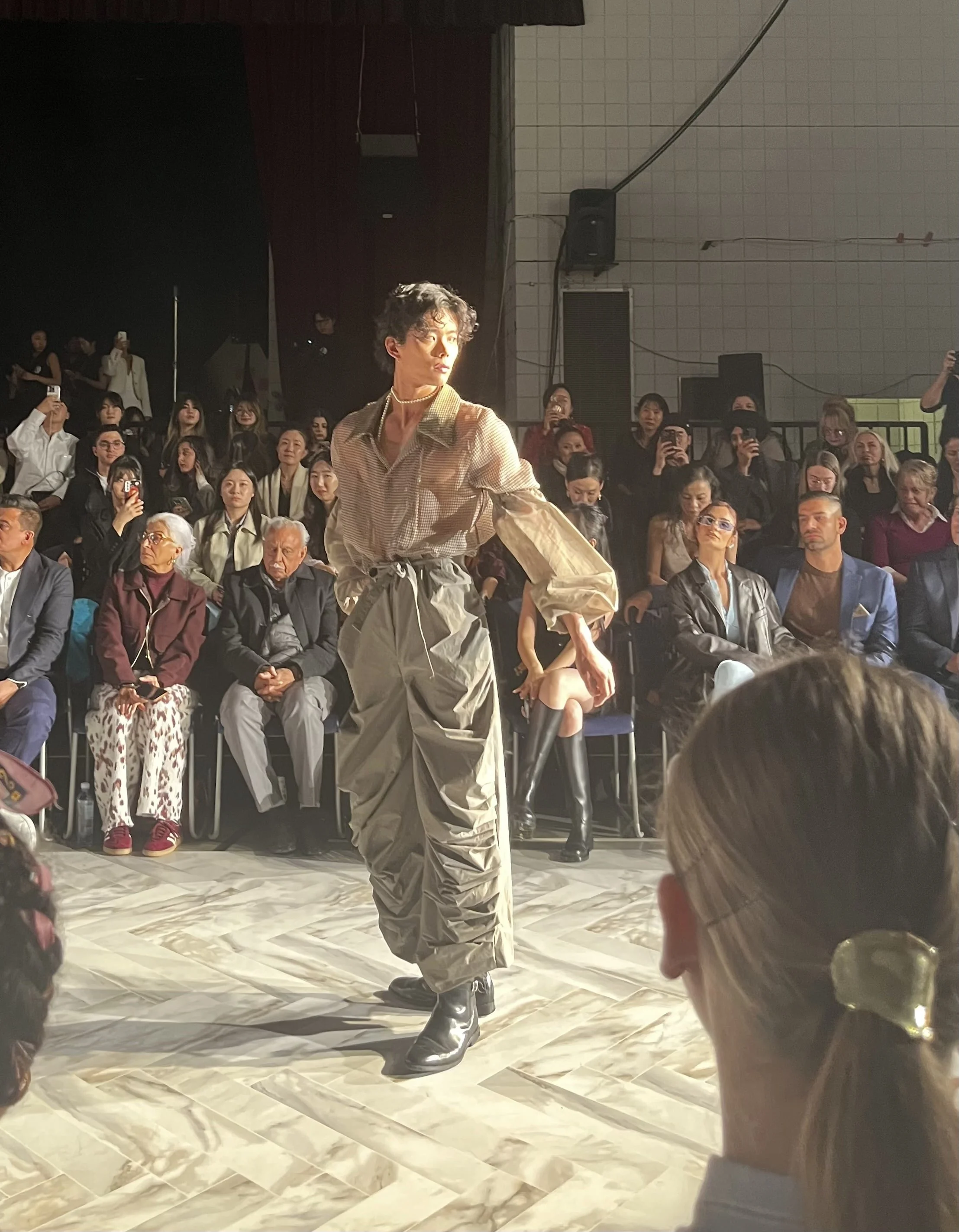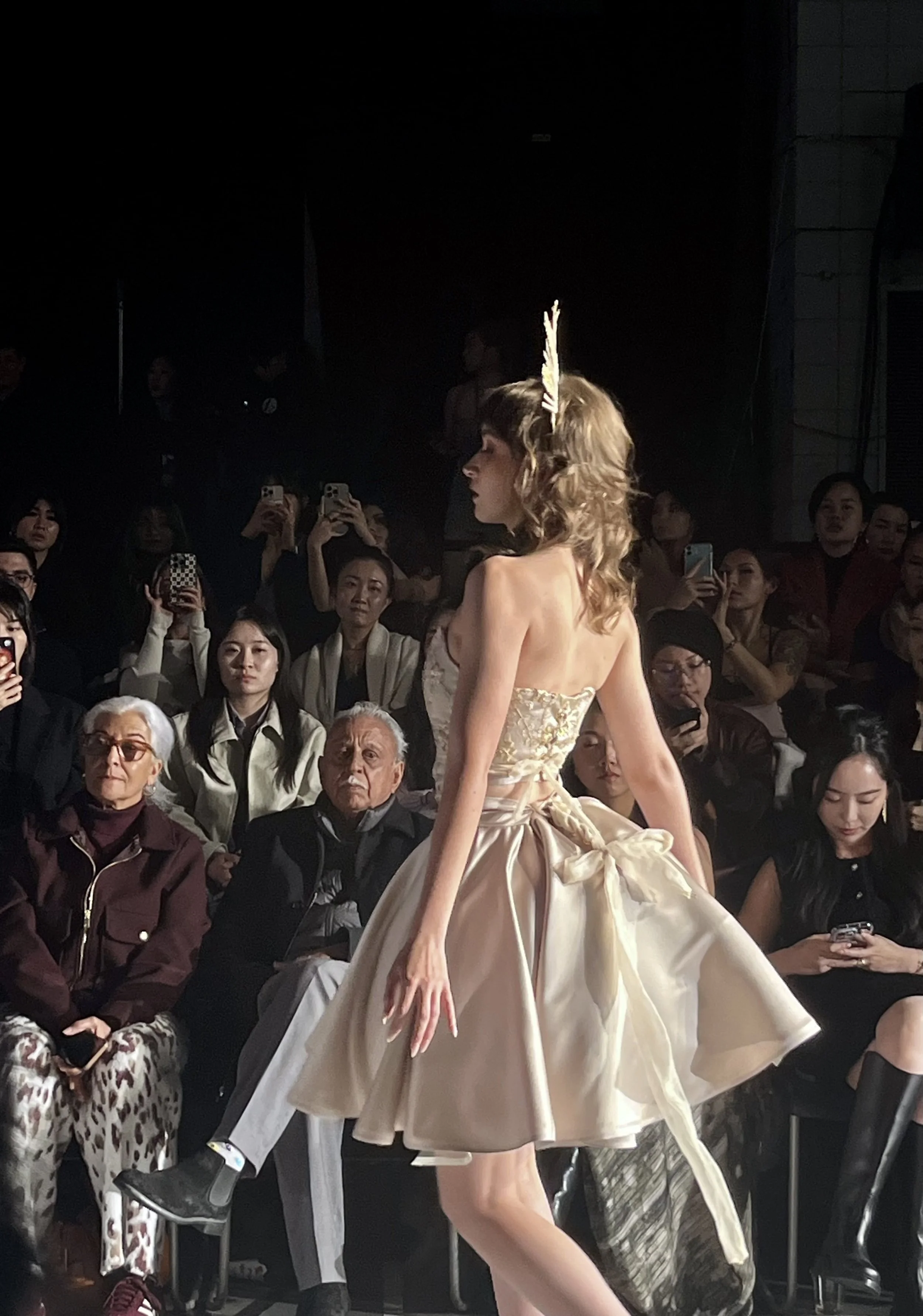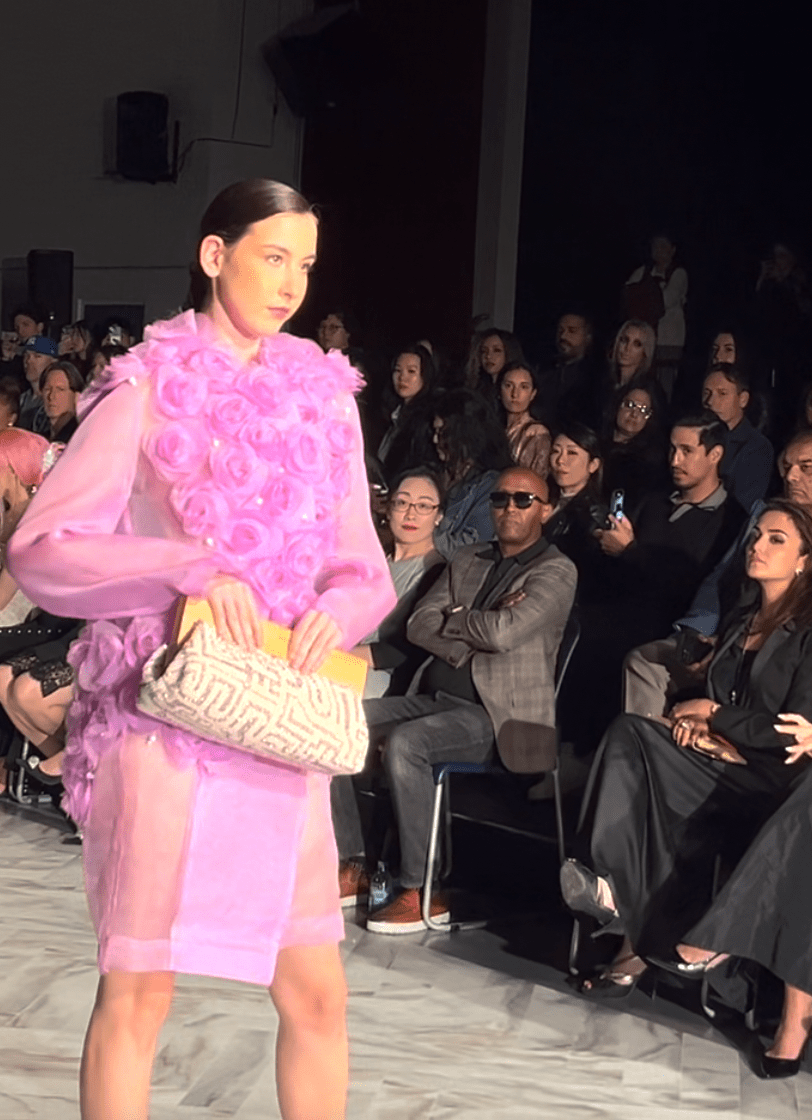Vancouver Fashion Week Was the Event of the Year for New and Seasoned Designers
/david lam hall for vancouver fashion week spring/summer 26
A model wearing an upcycled piece from gurl 23’s BROKN AROW collection at vancouver fashion week s/s 26
While October is best known for overpriced pumpkin spiced lattes, scanty Halloween costumes (in fabric, never in design) and the onset of seasonal depression, this year Vancouver Fashion Week overshadowed them all. Now having attended the first two days I have some thoughts, so here are some things you should know if you love the glitz and glamour of the catwalk, or even plan on making it out to the second largest fashion week in North America.
Christened International Fashion Week by founder Jamal Abdourahman all the way back in 2001, Vancouver Fashion Week was intended as a network for local and international industry leaders to maintain Vancouver’s position as a fashion capital. Of course it’s much more than that, but it’s worth noting that when it comes to international appeal, Vancouver Fashion Week truly has it all.
models in various dresses by richard wei at vancouver fashion week s/s 26
Hosted in David Lam Hall in the heart of Chinatown, the show opened with a line by Larissa Healey, a Two-Spirit, Anishinabe and Cree artist, often known by her alias Gurl 23. Nobody forgets the opener, and while that responsibility can come with a lot of pressure, Healey’s line BROKN AROW, traditional clothing with an upcycled twist, was just the opener the show needed. Healey has often spoken on the importance of upholding her culture’s traditions and values in her art, and her pieces reflected this beautifully in their ornate stitching and pops of gold, red and white. As a grass dancer herself, Healey weaves elements of Indigenous and Anishinabe garments into her contemporary pieces seamlessly.
If Healey grounded us in heritage, Richard Wei swept us into high-glamour futurism. A mix of glittering, body-hugging silhouettes, fashionable matching sets and even active wear that could give most performance wear brands a run for their money, his line screams metropolitan Vancouver. I immediately noticed that flowers are a recurring motif in his designs, printed onto mesh and stitched onto vibrant pastel fabrics, and while my own use of flowers is scant, it was a very nice call back to floral fashion of the 50’s.
Now, my personal favourite collection of the day was AMBUS by designer Arlette Ngung. Her illustrious career as a textile artist, with experience working for brands like Saks Fifth Avenue and Holt Renfrew, is evident in the artistry of the patterns and delicate silhouettes of her designs. While I loved every dress, I have my eye on a structured strapless piece with a glittering sunflower print; and yes, I will be thinking about it for weeks to come.
a model wearing a dress from arlette ngung’s ambus collection at vancouver fashion week s/s 26
a model in a dress from lokah chizuru’s line anahatau at vancouver fashion week s/s 26
The first day came to an end with Lokah Chizuru’s line ANAHATAU, which embraced the comfortability and vibrance of traditional Indian garments beautifully, standing out for its contemporary twist and airy feel. The collection balanced the ease of kaftan inspired draping with the vibrance of a coastal palette.
I may not be able to get away from the bitter cold of the city for some time, but the second day I definitely felt transported to a different land when the eerie designs of Alexander King Chen hit the catwalk. His signature? Black and white gauzy gowns, often with batlike details and eccentric silhouettes.
a model wearing alexander king chen at vancouver fashion week s/s 26
a model wearing atira x ewma at vancouver fashion week s/s 26
While Alexander King Chen was reminiscent of Alexander McQueen’s dramatic silhouettes and whimsical tulle and lace details, Threads by Thea had all the boldness for the runway while favouring a New York streetwear design. With gritty crop tops and skirts in earthy tones, it was elegance stripped down to its simplest form. However, I must admit that it was Atira X EWMA, a fashion line by enterprising women that began as a not-for-profit organization to end violence against women and children, that really blew me away. Aside from featuring some incredibly ethereal tropical pieces that served as a painful reminder of the dwindling sunshine, EWMA is one of the fashion organizations that gives back to its community, with many artists from the Downtown Eastside finding an outlet for self-expression as they earn a living through their work.
NITENMON was next, and if there is one thing that stood out to me about Sonoko Takeda’s line it was her take on traditional Japanese patterns, with vivid colors and fine lines to remind the onlooker that in fashion, every detail matters.
a model in a kimono from sonoko takeda’s nitenmon collection at vancouver fashion week s/s 26
a model in a set from maria augusta wozniak’s augusta fashion & textiles at vancouver fashion week s/s 26
If NITENMON reimagined heritage in a flurry of color and ornate patterns, Augusta Fashion & Textiles swept onlookers away to an underground jazz club in New York with the entry music alone; even if the founder, Maria Augusta Wozniak, is Edmonton born and grown. With her, gender neutral garments and bold, upcycled fabrics are the name of the game, and it is a game she plays well.
a model in a dress from the cut’s zodri by zenaida rodriguez at vancouver fashion week s/s 26
Something I love about Vancouver Fashion Week is the effort that goes into supporting young, emerging artists, and this was most evident in the lines put on display by The Cut Design Academy. While I’ve often seen high fashion as an elusive member’s only club that welcomes deep pockets and impressive connections, my experience at Vancouver Fashion Week showed me a glimpse of what can happen when people in the industry lift each other up and stress that designers listen to their own instincts. Anyhow, I must admit the designers of Field StockXSrounge, Cyn, Solange and Zodri definitely left me wanting more. Cyn especially. Anyone that knows me knows I’m a sucker for cheetah print. And yes, I do believe it’s coming back (make way monochrome sets, the 90’s are making a comeback).
The second day of the fashion week ended with Jumper Zhang. A Chinese brand, it encapsulates the elegance and refinement that characterize haute couture, bringing glossy fabrics to life and serving as a reminder that fashion is, in fact, a form of art. And while unlike a painting on the wall of the Louvre, it is ever-changing, it has a way of speaking to people that static art does not. As Miuccia Prada said best, “fashion is instant language,” and when the world is moving so fast, Vancouver Fashion Week may be just the connection this city needs.
models wearing jumper zhang at vancouver fashion week s/s 26
Vancouver may be famous for its overcast skies and rain-spattered streets, but it also provides a unique space for creative minds across the globe to come together and create bold, revolutionary art. Not only does Vancouver Fashion Week promote connection in its commitment to upholding diversity in designers and designs, but it has also served as a platform for emerging leaders in their field since its foundation twenty-four years ago. While it can be hard for tradition to keep up with exciting new trends in the industry, the designers in fashion week prove that you can do both, and that is why I believe this is an event Vancouverites should not miss.
a model wearing a dress from arlette ngung’s ambus collection at vancouver fashion week s/s 26
Kirsten Danae (she/her) is a writer with a passion for film and the occasional excess in caffeine. She grew up in Mexico before moving to Vancouver to study English and Creative Writing at the University of British Columbia, and in her free time enjoys watching and reviewing movies so she can write one herself someday. Follow her on IG @keeks_diner

